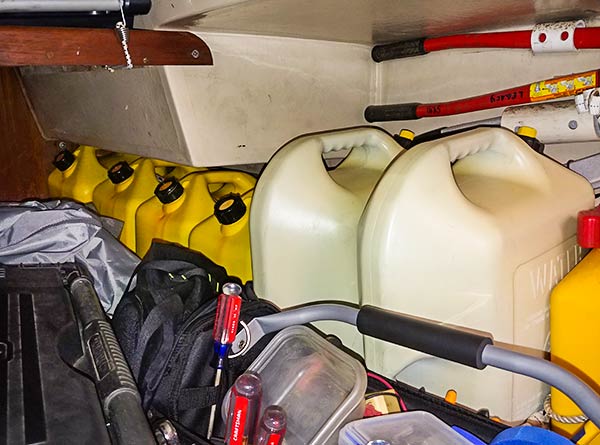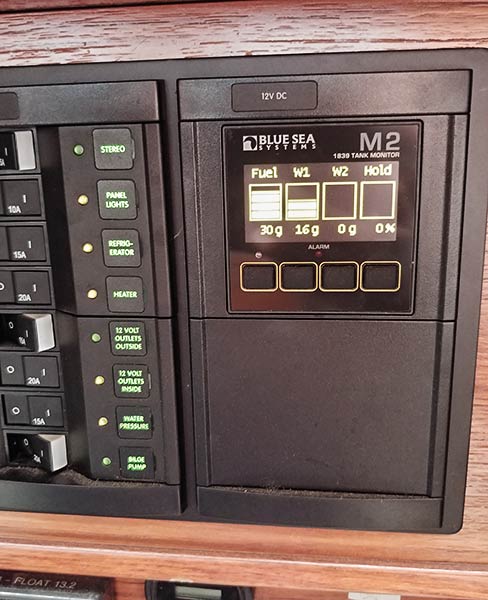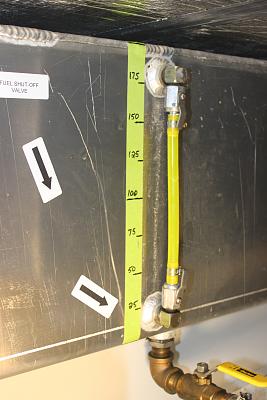October 24, 2019
I was thinking about the most important suggestions I’d give someone going offshore the first time and near the top of the list was to make a two day passage before setting off on a long voyage. We hadn’t done this when we headed from Los Angeles to Hawaii the first time and never realized how much skill it took, or at least a different skill set, to keep the boat moving when conditions weren’t ideal.
When day-sailing off the California coast it just wasn’t an issue. If the wind went light or on the nose, we’d flip on the engine. No problem. On our 2,250 mile trip to Hawaii, we wouldn’t have had the fuel to use that strategy. We learned “on the job” how to use the gib pole and how to trim the sails in light air. It would have been nice to have these techniques mastered before we set off.
Then I was wondering why this hasn’t been an issue for us since reaching the Marquesas. Now, if the wind goes light, we just motor. The reason we can do this now, is that our passages are relatively short at only seven or eight days and around 1,000 nautical miles. With our fuel capacity, we can do almost that distance under power. On one passage from Fiji to New Zealand, with no wind, we motored 800 miles. It was lovely, if a bit noisy.
We have a 35 gallon (132 liter) main tank, a 20 gallon (75 liter) bladder tank and we carry six jugs of fuel in our aft quarter berth that hold 33 gallons (125 liters) making a total capacity of 88 gallons (333 liters). We also sometimes carry an additional jug in our cockpit that holds 7 gallons (26 liters). In ideal conditions, our engine burns about 0.5 gallons an hour and 5 knots. That’s a max range under power of 950 miles. In adverse conditions, we don’t do as well. If there’s a little wind helping, we do better.
We carry all this fuel below decks. Our walkways around the deck are narrow and Legacy has low freeboard, so there are some pretty violent waves that wash over our decks. I have fears that if our jugs are secured to the shrouds, a wave could take our rigging along with the jugs. I also don’t like the way jugs move the center of gravity higher with jugs on deck.

Adding the bladder tank under our port dinette seat was one of the best things we did on Legacy. We have a little electric transfer pump and valves to direct the fuel from the bladder tank to or from the main fuel tank (there’s no separate fill hose for the bladder tank). This means that if conditions are rough, we don’t need to be adding fuel from jugs out on deck.

Keeping track of the fuel remaining on a passage has proved to be a challenge. A good gauge is essential and hard to find for boats. We had a Tank Tender and for a few years, it was spot-on accurate. We could tell how much fuel we had down the liter. Over pressurizing the gauge once due to a plugged air tube ruined that. We replaced the gauge and recalibrated but it was never the same. We installed Blue Sea’s gauge and ultrasonic sensors but they are total junk! We’re now using Blue Sea’s display unit but with an old fashioned, mechanical sensor. With all that, we’ve never had the kind of accuracy we had with our first Tank Tender.

I’ve considered flow meters, but at the low flow rates of our small diesel engine, along with the additional complication of the fuel return line, this solution is expensive and I don’t think the results will be any better than what we have. Maybe a good, old fashi0ned sight glass would be better, but it would be hard to use on Legacy. Maybe a dip stick?

So, to bring this perhaps pointless conversation back around, our suggestion if you’re heading offshore for the first time on a passage that’s significantly further than your fuel range is to learn to keep the boat moving, no matter the conditions (exception for rough conditions – then learn to heave to). If the passages are “short,” augment your fuel capacity so that you can motor. It would be lovely to drift along at two knots in light wind and calm seas, but we’ve not had that luxury since our Hawaii trips as we’ve always been racing a weather system that wants to catch us and hurt us! -Rich
Note from Cyndi: Before our first trip to Hawaii, we had a neighbor, a very experienced cruiser, who was all excited about going on a sailing outing with a “light air specialist.” He invited us along, but we had something else to do and didn’t take him up on the offer, not seeing why this was so exciting. We came to regret that decision as we found, during our trips to and from Hawaii, that light wind can be every bit as challenging as heavy weather, especially when it’s combined with swells that dump the air out of the sails.
What we learned on our own is being able to pole out the jib is invaluable on very long passages such as those we made to and from Hawaii. We once met a new cruiser in San Diego headed for Hawaii, and I insisted that he needed to invest in a pole for his head sail. He later wrote us and thanked us as it came in very handy on his crossing.
For all that insisting back then, we almost never use our pole on our crossings to and from New Zealand as we’re always racing a weather system and have to keep the speed at maximum warp drive (“More power, Scotty, more power! The lives of 2 crew members depend on it!”) -Cyndi





